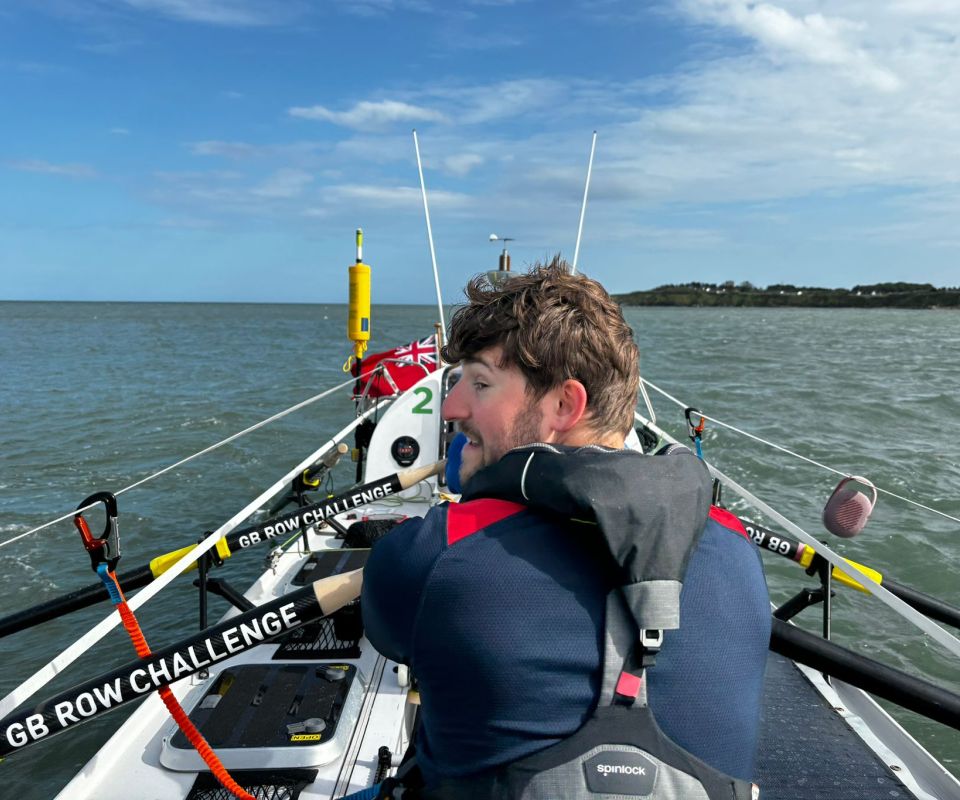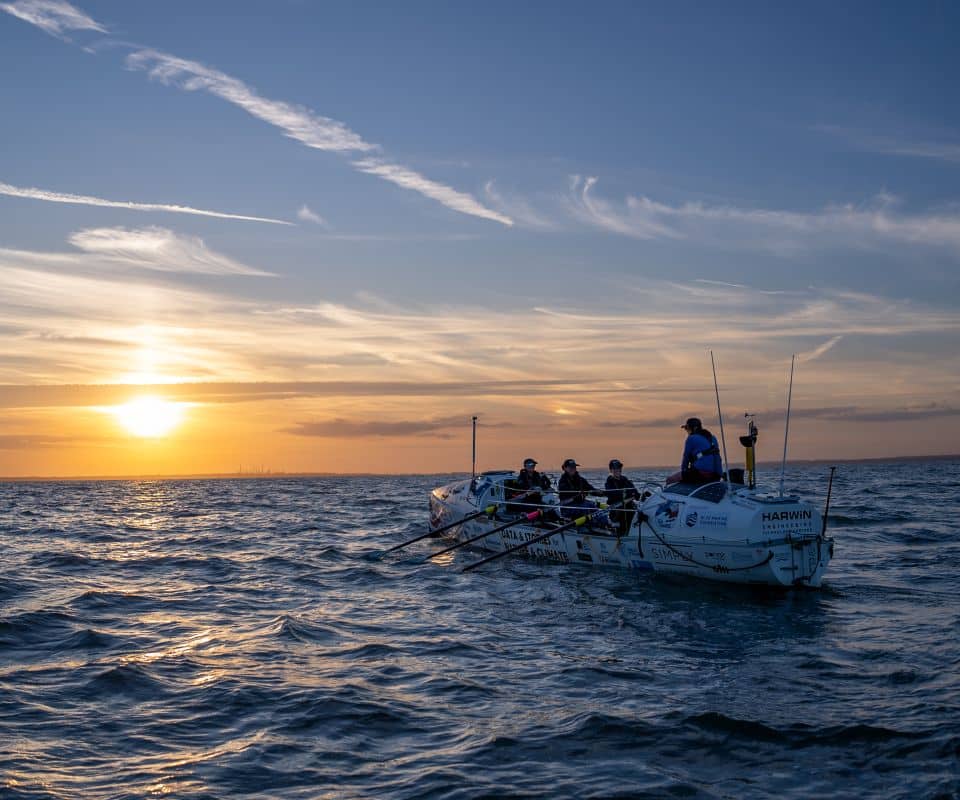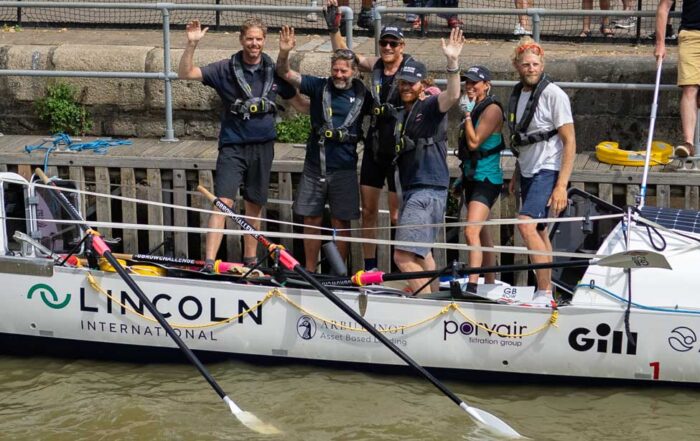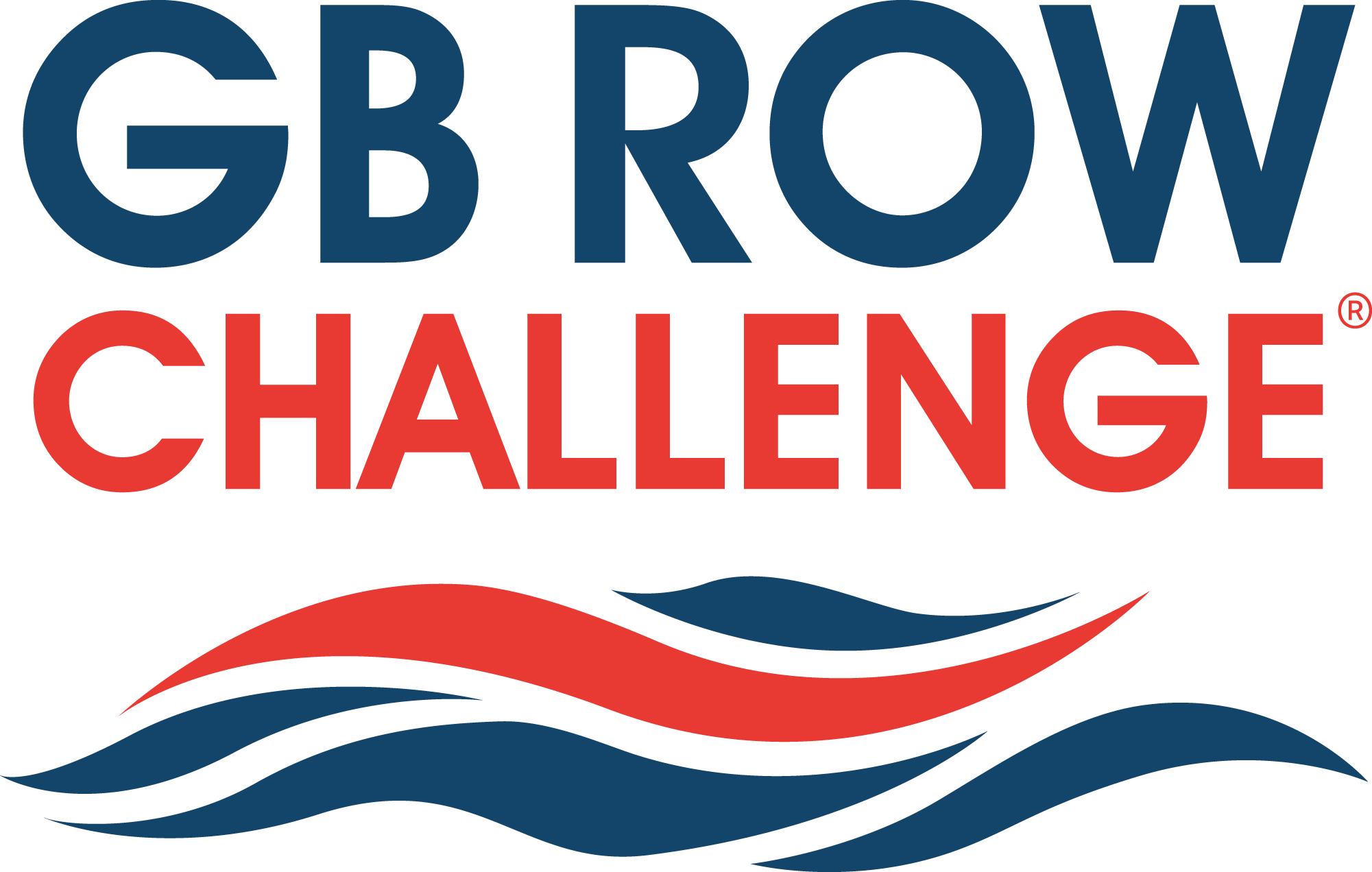Taking on a rowing challenge is an incredible test of strength, endurance, and teamwork. Whether you’re competing in a local event or an extreme rowing sport challenge, putting together the right team is just as important as the training itself. A well-balanced crew, good communication, and shared determination will make all the difference in your success on the water.
Finding the right team starts with understanding the demands of the challenge. Rowing isn’t just about power; it requires rhythm, coordination, and the ability to keep going when exhaustion sets in. Each team member needs to bring something valuable to the boat, whether it’s experience, endurance, or leadership. Having a mix of different strengths will help create a well-rounded team. Here’s a summary;
How To Get A Team Together For A Rowing Challenge
- Choose team members with a mix of strength, endurance, and experience.
- Ensure everyone is fully committed to the challenge.
- Define roles within the team for balance and efficiency.
- Train together regularly to build coordination and rhythm.
- Develop clear communication strategies on and off the water.
- Practise in different weather and water conditions.
- Build mental resilience through endurance training.
- Plan a structured fitness and nutrition programme.
- Strengthen team bonds through trust and motivation.
- Test and maintain all equipment before race day.
Training together is essential. A rowing challenge involves long hours on the water, and your team must learn how to work in perfect sync. Practising together will help develop a steady rhythm, improve communication, and build the mental resilience needed for the challenge ahead. Rowing in different conditions, from calm waters to rough seas, will prepare your crew for whatever the race throws at you.
Beyond physical training, a strong team mentality is key. Every rower will face moments of exhaustion or self-doubt during the challenge, and this is where teamwork matters most. Encouraging each other, keeping morale high, and trusting in your team will push you through the toughest stages of the race.
In this guide, we at GB Row Challenge will cover how to choose the right teammates, train effectively as a team, build strong communication, and handle the unexpected challenges that come with a rowing sport challenge. With the right preparation and mindset, your team will be ready to take on the water and finish strong.
Choosing The Right Crew For A Rowing Sport Challenge
Putting together the right team for a rowing sport challenge is one of the most important steps in preparing for the race. Rowing is not just about strength—it requires coordination, endurance, and teamwork. Choosing the right crew will set the foundation for a successful challenge.
Balancing experience and fitness levels: A strong team includes a mix of rowers with different skills. Some may bring technical expertise, while others may have endurance from other sports. Experienced rowers can help newer members refine their stroke technique, while those with high fitness levels can push the pace. It’s important to have a balance between skill and stamina to keep the boat moving efficiently.
Understanding different rowing positions: Each rower has a role, and placing the right people in the right positions can make a big difference. The stroke seat sets the rhythm and pace for the rest of the crew, so they need to be steady and confident. The bow seat is responsible for balancing the boat and making quick adjustments. Power rowers sit in the middle, providing most of the strength, while the coxswain (if included) keeps the team in sync and navigates the best route.
Building team chemistry: A successful rowing team is about more than just physical ability. Teamwork and communication are essential, especially in a long-distance rowing challenge. A team that works well together will handle setbacks more easily and stay motivated throughout the race. Spending time together outside of training, discussing strategies, and supporting each other will strengthen team bonds.
Commitment and mindset: Every member of the team must be fully committed to the challenge. Rowing a long-distance race is mentally and physically demanding, and every rower needs to be prepared for tough conditions. A strong mindset, resilience, and the ability to stay calm under pressure are just as important as physical ability.
Finalising the team: Once the team is selected, it’s important to train together consistently. Practising in different weather conditions, learning to adjust to each other’s rowing styles, and setting common goals will help the team prepare for race day. A well-chosen crew that trusts each other, communicates well, and shares the same determination will have the best chance of success in any rowing sport challenge.

Training As A Team: Preparing For The Rowing Challenge
Once you’ve put together your team, the next step is training. A rowing sport challenge demands more than just strength—it requires endurance, technique, and teamwork. Training together will help your crew row efficiently, stay in sync, and build the stamina needed to complete the challenge.
Developing a structured training plan: A good training plan should focus on endurance, strength, and rowing technique. Long-distance rowing sessions will build stamina, while shorter, high-intensity sessions improve power and speed. Strength training, especially for the legs, core, and back, is essential for maintaining form over long distances. Cross-training with cycling, running, or swimming can also help improve overall fitness without overloading the rowing muscles.
Practising on open water: While rowing machines are useful for fitness, nothing replaces time on the water. Training in real conditions helps the team adjust to waves, wind, and changing currents. Practising in different weather conditions will prepare the team for whatever the challenge brings. Learning how to handle rough waters and sudden changes in conditions will prevent panic during the actual race.
Perfecting rowing technique: Technique is just as important as physical strength. Poor technique can lead to wasted energy and even injuries. Each rower must focus on smooth, controlled strokes, keeping the boat balanced and moving efficiently. Training with a coach or reviewing video footage can help refine technique and improve overall performance.
Synchronising strokes and teamwork: A rowing team must work as one unit. If rowers are out of sync, the boat will slow down, and energy will be wasted. Practising together regularly will help develop a natural rhythm. The stroke seat must set a steady pace, and the rest of the team must follow it precisely. Drills such as rowing with eyes closed or following only the stroke rower’s rhythm can help build team coordination.
Building mental endurance: Rowing for hours, or even days, is as much a mental challenge as a physical one. Training should include long-distance rows that test the team’s ability to stay focused and push through fatigue. Mental resilience training, such as visualisation exercises and endurance tests, can prepare the team for tough moments during the race.
A well-trained team that knows how to pace themselves, row efficiently, and support each other will have the best chance of completing the rowing sport challenge successfully.

Building Teamwork And Communication On The Water
A rowing challenge isn’t just about strength and endurance—it’s about teamwork. Even the fittest rowers will struggle if they don’t row in sync. Communication, trust, and coordination are what separate a successful team from one that falls apart under pressure.
Establishing clear communication: When you’re on the water, verbal communication needs to be short and effective. Every team should agree on clear calls for pacing, adjusting stroke rate, and handling challenges like waves or wind. If a coxswain is part of the crew, they will give instructions and keep the team focused. Without one, the team must rely on simple commands to stay in sync.
Understanding each other’s strengths and weaknesses: Not all rowers have the same abilities, but learning how to work together will help the team perform at its best. Some rowers may have more endurance, while others provide bursts of power. Recognising these differences will allow the team to distribute effort wisely and avoid burnout. Supporting each other and playing to individual strengths will make rowing more efficient.
Syncing strokes and maintaining rhythm: One of the biggest challenges in a rowing sport challenge is keeping a steady rhythm. If rowers are out of sync, the boat will lose speed and waste energy. The stroke seat sets the pace, and the rest of the team must match it perfectly. Practising stroke rate consistency and using drills like rowing with eyes closed or rowing in silence can help improve timing.
Handling setbacks as a team: Every rowing challenge comes with unpredictable moments—bad weather, exhaustion, or technical issues. Staying calm and working together will make a huge difference in how well the team handles these setbacks. Encouraging each other and sticking to the game plan will prevent frustration and panic.
Keeping morale high: Long-distance rowing pushes everyone to their limits, and low morale can be just as damaging as physical exhaustion. Simple things like checking in with teammates, using positive reinforcement, and reminding each other of the end goal can keep motivation high. Teams that support each other mentally will perform better when fatigue sets in.
A rowing sport challenge is won by teams that move as one unit, communicate clearly, and support each other through every stroke. The more a team trains together, the stronger their bond will be, and that can make all the difference in crossing the finish line.
What To Expect During A Rowing Challenge And How To Handle It
Taking on a rowing sport challenge is an exciting but demanding experience. Whether it’s your first endurance race or a multi-day expedition, understanding what to expect will help you prepare mentally and physically. From changing weather conditions to fatigue, knowing how to handle challenges on the water will make all the difference in your performance.
Unpredictable weather and water conditions: No two rowing challenges are the same, and the biggest variable is the weather. One moment, you could be rowing in calm waters, and the next, you’re battling strong winds and choppy waves. Training in all conditions will help your team handle these changes. Wearing the right gear, such as waterproof clothing and thermal layers, will also keep you comfortable when conditions get tough.
Physical exhaustion and muscle fatigue: Rowing for hours takes a serious toll on the body. Muscle fatigue, cramps, and soreness will set in, especially during long races. The key to managing this is pacing. Overexerting yourself too early can lead to burnout before the finish. Keeping a steady, controlled rhythm and sticking to a hydration and nutrition plan will keep energy levels up. Stretching before and after each session can also reduce stiffness and prevent injury.
Dealing with mental fatigue: Rowing is just as much a mental challenge as a physical one. When exhaustion sets in, the mind can start to wander, and motivation can drop. Setting small milestones, focusing on the present moment, and encouraging teammates will help you stay mentally strong. If rowing solo, using breathing techniques and personal mantras can keep your mindset positive.
Technical issues and equipment failure: No matter how well you prepare, boats and equipment can fail during a race. Oars can break, footplates can come loose, and rudders can malfunction. Every team should carry basic repair tools and know how to handle minor issues quickly. Testing and maintaining equipment before the challenge is the best way to prevent unexpected failures.
Rowing in shifts and managing sleep deprivation: For longer endurance challenges, teams often row in shifts. This means some rowers rest while others keep moving. Sleeping in short bursts and staying hydrated will help prevent exhaustion. Practising this routine during training will make the transition easier during the actual challenge.
Expecting the unexpected is a key part of a rowing sport challenge. Being prepared for rough conditions, mental and physical fatigue, and equipment issues will help your team stay strong and focused throughout the race.
Crossing The Finish Line: Why Teamwork Matters In A Rowing Sport Challenge
Completing a rowing challenge is one of the most rewarding experiences a team can achieve. After weeks or months of training, countless hours on the water, and pushing through exhaustion, crossing the finish line is proof of dedication, teamwork, and resilience. The final stretch is always the hardest, but with the right mindset and preparation, your team can finish strong.
By the time you reach the last leg of the challenge, fatigue will be at its peak. Muscles will ache, and energy levels will be running low. This is where teamwork becomes more important than ever. Encouraging each other, maintaining a steady rhythm, and focusing on efficient strokes will help keep the boat moving at a strong pace. Small, steady efforts in the final hours can make the difference between a smooth finish and a painful struggle.
The mental side of rowing is just as important as the physical side. In those last few miles, it’s easy to let exhaustion take over, but this is when the training and preparation pay off. Breaking down the remaining distance into small goals and reminding each other of the achievement ahead will help push through the toughest moments.
Crossing the finish line is a moment every rower will remember. Whether it’s a competitive event or a personal endurance challenge, completing the journey together is what makes it special. Every stroke, every setback, and every challenge faced as a team builds strength and trust.
At GB Row Challenge, we know what it takes to succeed in endurance rowing. If you’re ready to take on the water, we can help you prepare, train, and row with confidence. Call us today on +44 (0) 7810 493081 to start your rowing journey.
Qualifications Needed To Partake In A Rowing Challenge
These are the qualifications or training requirements to take part in a GB Rowing Sport or Challenge;
Skipper
- Skippers require experience, therefore GB Row Challenge stipulates team Skippers must have the following Royal Yachting Association (R.Y.A.) qualifications; R.Y.A Day Skipper, Theory and Practical Sailing with experience, R.Y.A Coastal Yacht Master Offshore theory.
First mate
- R.Y.A Day Skipper Theory ideally supported with R.Y.A Day Skipper Practical.
All Crew to hold
- R.Y.A Sea Survival course, all crew members are required to attend this course.
- R.Y.A VHF / SRC (Short Range Certificate) Radio course, all crew members must have his qualification.
- R.Y.A Essential Navigation, all crew members must have this qualification.
2 x Crew Members
- R.Y.A First Aid at sea course, 2 x crew members must hold this qualification.
Training Rows
- Teams must complete a minimum of 200 hrs at sea in the boat which includes a 4 night, 5 day row along the south coast.
GB Row Challenge
GB Row Challenge is ‘The World’s Toughest Rowing Race’, and so it has the highest crew qualification and training requirements of any Ocean Rowing Challenge which helps provide teams who enter the best possible chance of completing the circumnavigation of Great Britain.
Share This Story, Choose Your Platform!
Recent Posts
Study reveals how much UK seas have warmed in a year
UK seas were, on average, 0.39°C warmer in 2023 compared to 2022, a report by the University of Portsmouth and GB Row Challenge has found. Some regions, including the Celtic and Irish Seas and the northern North [...]
How Extreme Rowing Challenge Is Tackling Ocean Pollution
Tackling ocean pollution is one of the biggest environmental challenges of our time. Extreme rowing challenges are now playing a vital role in tackling ocean polluting by gathering valuable data, raising awareness, and inspiring action. [...]





